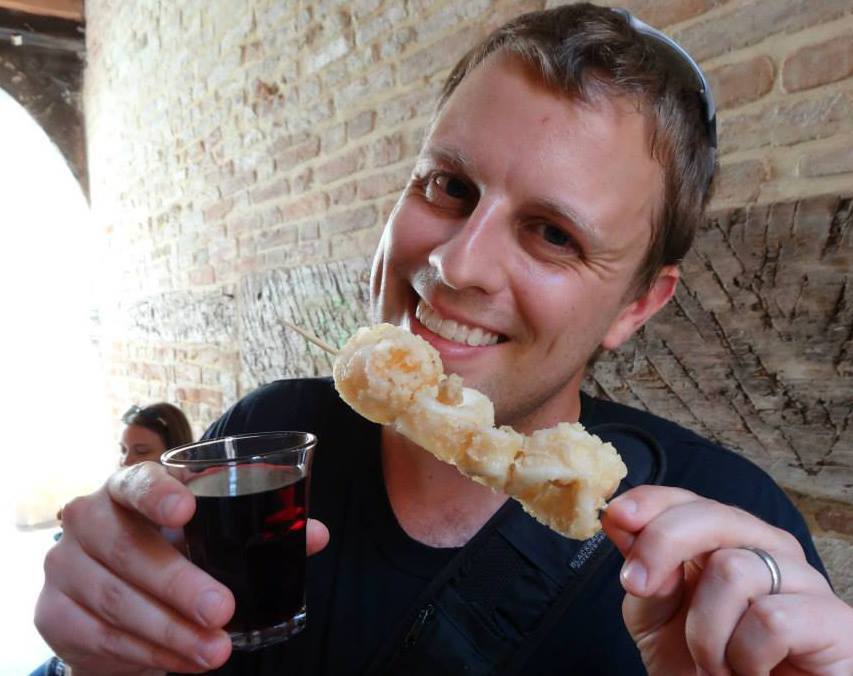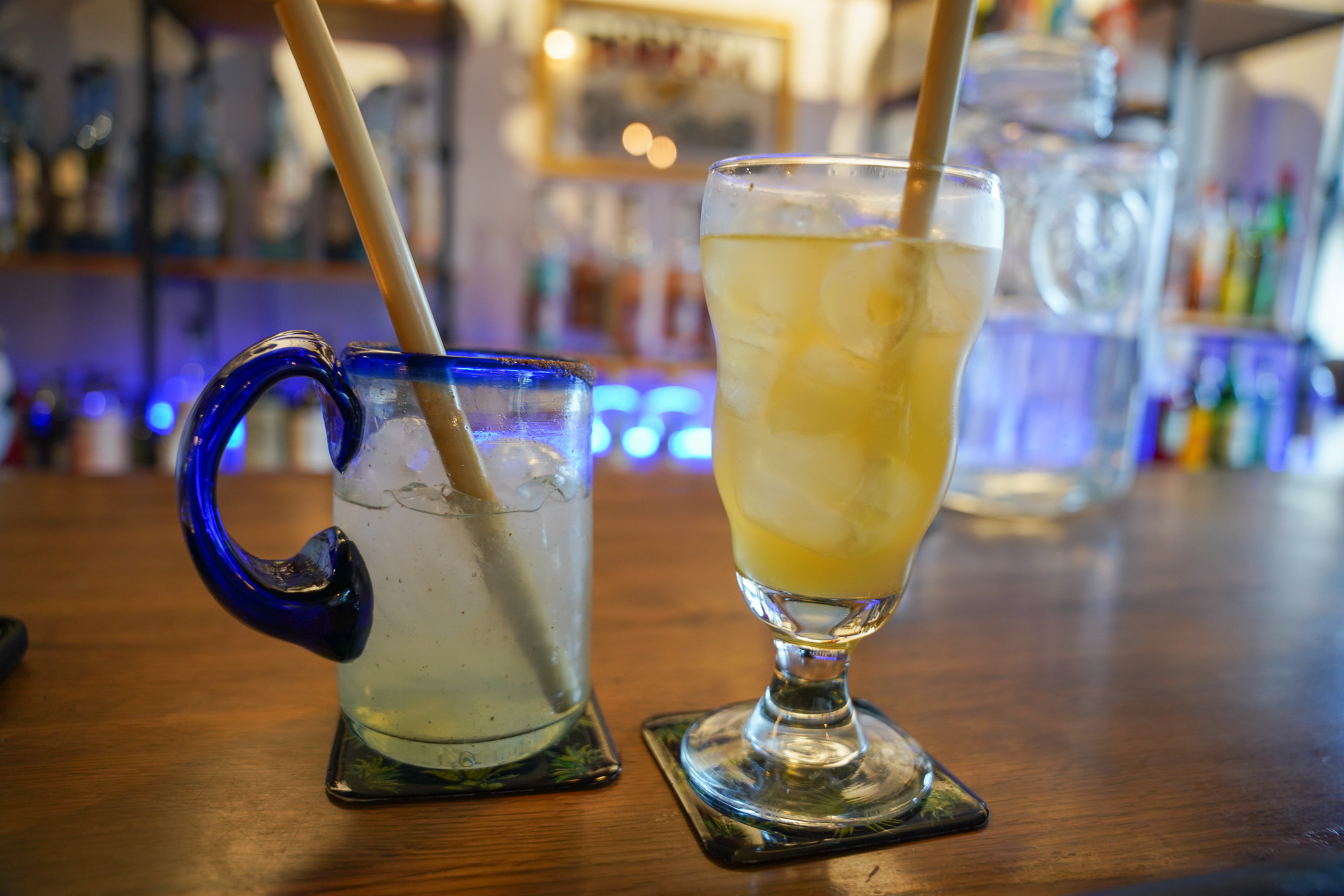Published by Jeremy. Last Updated on March 13, 2024.
Disclaimers: Our site uses demographic data, email opt-ins, display advertising, and affiliate links. Please check out our Terms and Conditions for more information. Listed prices and attraction details may have changed since our visit and initial publication.
If you are planning a trip to Oaxaca, odds are good you have mezcal tasting on your mind.
The good news is that you won’t go wanting for more mezcal in Oaxaca. The stores, tasting rooms, and cocktail bars are plentiful beyond even what we expected. The bad news is that mezcal, particularly good mezcal, is expensive and may come at quite the sticker shock.
So in this one, we thought we’d break down ways you can taste mezcal in Oaxaca, share why it is so expensive, and help encourage you to plan a trip out to a palenque to see how agave is grown and mezcal is produced!
✈️ Book Your Next Trip
- • Planning a trip? Find a flight deal.
- • In need of a room? Check out hotel and apartment prices.
- • Taking a cruise? Find a cruise itinerary for your journey.
- • Don't overlook picking up a rental car or day tours as well!
Mezcal Shops and Bars in Oaxaca

It won’t take long to see that the city center of Oaxaca is crazy about mezcal. Of course, with the large number of tourists visiting, this should be no surprise. Oaxaca is the mezcal capital of Mexico, after all!
No matter where we found ourselves, we were seemingly never more than two or three blocks away from a mezcal bar, store, or tasting room in Oaxaca. There are so many, in fact, that it would be impossible to visit all of them in a single trip. (We were originally going to try, then quickly gave up hope on that idea!)
To us, there are three types of mezcal businesses you should be aware of when visiting Oaxaca’s historic city center:
- Mezcal stores. These are common in the tourist-oriented markets in particular, but are places that offer a large collection of bottle sales featuring many producers. Some may offer samples, but this is hit or miss and may only be some of the more mass-produced varieties that aren’t too expensive.
- Where to visit? Mercado 20 de Noviembre was our favorite for stores with large volumes of mezcal ranging from mass-produced to artisan producers. Prices seemed to vary, so be prepared to shop around.
- Mezcal bars. These are spots that carry an array of mezcal producers under their respective labels. Tastings can run the spectrum from individual pours and themed flights to cocktails. Mezcal bars may feature reasonably priced, farmed agave to rare and wild agaves at an elevated price point to match. Many of these sell bottles to go, too; however, prices can vary compared to stores. Once again, you will want to shop around.
- Where to visit? Mezcalogia was one of our favorite bars for themed mezcal flights where you can sample a lineup from a single producer or one agave across many unique regions. Mezcal producer Cuish also has its own tasting rooms in Oaxaca. We did not visit the latter, we must admit, but this is only because we have a nice collection of Cuish at home already.
- Private label mezcal bars. These bars tend to focus on small scale producers with super premium prices for both tastings and bottles sales. These bars tend to work directly with small family farmers/distillers to buy their products and white label them under their own brand name (with individual farmer/producer information listed on the label- we’ll talk more about that later in the article). While expensive, these are, in our opinion at least, among the finest mezcal in Oaxaca.
- Where to visit? In Situ and La Mezcaloteca are two high-end gems that focus on private-label mezcal. Tasting flights include a great walkthrough of the agave, region, distillation method, and more. Note that In Situ has two locations, and the Bodega location also offers cocktails. La Mezcaloteca required reservations during our visit, as you receive the full attention of the bartender as they craft a custom flight based on your palate/interests.
Of course, this is only a starting point when tasting mezcal in Oaxaca. We simply recommend starting with a mix of all three themes of stores. There are many, many businesses within each of these broad themes that you can consider checking out during a visit. Just keep in mind that the more the business shifts to premium mezcals, the more likely a reservation is necessary- so always confirm shop requirements before visiting.
Finally, we’d also be remiss if we didn’t mention that there are plenty more cocktail bars all over Oaxaca that serve great creations with and without mezcal. While we won’t call them tried-and-true mezcal businesses like the list above, we’d be remiss if we didn’t highlight Selva and Sabina Sabe, as they are rightfully considered two of the best cocktail bars in Oaxaca.
Be Prepared for Sticker Shock
Now that we’ve broken down the broad mezcal business types you’ll likely see when in Oaxaca, we have to give you a bit of a warning- good mezcal is expensive.
We knew we were in for a bit of sticker shock when shopping for mezcal in Oaxaca, but we didn’t quite expect premium tastings to run upwards of $40, $50, $75 USD, or more for four or five one-ounce pours (particularly at the private label spots mentioned above). Bottle sales weren’t much better, with prices running from about as low as you can ask for mass-farmed agave to $100+ per bottle for rare, wild agave.
So, why is mezcal so expensive?
The simple explanation is that agave, unlike most other raw ingredients for alcohol and spirits, is not sustainable. While grains for whiskey or grapes for wine can be grown in a single season, agave takes 5, 10, 20, or even 25+ years to reach maturity before it can be harvested!
This is why a lot of the mass-produced mezcals only use a few types of agave, like Espadin. These agaves have been found to be best cultivated in a farm (not wild) and can also reach maturity in well under 10 years. Other agaves only really grow in the wild, like Tepeztate (one of our favorites which takes 20-25+ years to mature), and it becomes a balance between harvesting and letting the agave flower and produce more plants for the future.
- Fun Fact: You may be surprised to learn that agave plants die after flowering. If harvested for mezcal production, they are generally harvested right before they are likely to flower when the agave heart is at its peak. We were told that the push to let some agave flower for sustainability is a growing movement in Oaxaca. But, with the timescales needed to produce mezcal, this one may be a slow shift over generations- not years.
As such, it was pretty common to have $50-$100+ bills when visiting higher-end mezcal tasting rooms in Oaxaca before buying any bottles, and those who wish to sample the region’s finest products will do well keeping this in mind ahead of time!
Take a Tour to the Palenques
Finally, any mezcal fan should also plan to visit a palenque to see how mezcal is made. You may be faced with the option to visit either mass-produced facilities or local farms, and we almost always advocate for the latter for the best experience if you can make it work.
We got the chance to see two producers when hiring a driver to visit Hierve el Agua outside of the city- one of the larger scale on the plains and one family operation up in the hills. The latter was so small that we didn’t even catch the family name and was purely selected by our driver as one of his favorite producers. Admittedly, along the road to Hierve el Agua you’ll see no shortage of distilleries just like this one!
Visiting a small-scale producer is, well, wild. These tend to be small operations alongside the road with just one or two fermenters and stills with a setup that can only be described as rustic- there is no modern technology here! The batch sizes at these producers are exceptionally small (these are often the ones that the white label bars support directly, as mentioned above), and because the sales service the local community first and foremost, they simply have their mezcals in glass carboys and fill up plastic bottles on demand!
Did we envision walking away with a 375 mL bottle of Tepeztate with a handwritten label when we left for the day? Not at all. Were we surprised when the method of transferring from the glass carboy to our bottle involved our hostess starting a siphon with a plastic tube using her mouth? Absolutely. But this is the charm of local mezcal producers, and we loved it!
As a bonus, because the family had just smoked some agave, we also got to try the cooked agave flesh right after it had cooled down as a bonus simply for having lucky timing during our visit. Think smokey pineapple flavor but full of inedible fibers at the same time- it was an incredible treat!
Visiting a producer like this rounds out the mezcal tasting experience in Oaxaca as you can come full circle in seeing agave grown in a farm, in the wild, seeing it be made, and, of course, tasting the full spectrum of styles along the way. Our only regret was we could not stop at more!
Overall, it really is hard to beat the mezcal experience in Oaxaca. While this one did surprise us with just how much of a premium is charged for good mezcal, even in Oaxaca, after learning about the difficulties in cultivating, the rarity of some agave, and the overall concerns of sustainability, we fully understand why that is. Still, production is changing, and we move to see a more sustainable agave landscape in the future- even if that future may still be decades away.
Have you gone mezcal tasting in Oaxaca? What were your favorites? Comment below to share!
About Jeremy

About the Author: Jeremy is a full-time travel writer based in Pittsburgh and primary author of this site. He has been to 70+ countries on five continents and seeks out new food, adventure activities, and off-the-beaten-path experiences wherever he travels.







